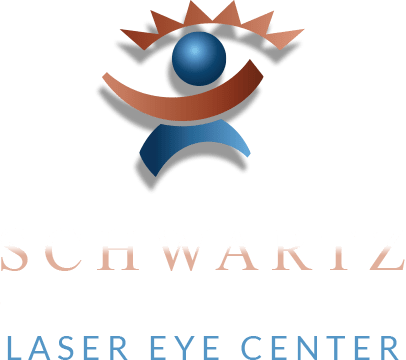At What Age Will I Need Reading Glasses?
Posted on March 21, 2021 by Schwartz Laser - Eye Health

A common milestone on the journey to middle age is presbyopia, a condition that typically appears at age 40 or above.
At some point, you begin to notice that reading fine print takes more light and greater concentration. Bringing a page closer doesn’t make it any clearer; in fact, you’ll begin to hold books, magazines and newspapers at arm’s length. Ultimately, this extend-the-arm-while-squinting solution becomes insufficient, and vision correction is needed.
Below, experienced ophthalmologist Dr. Jay Schwartz of Phoenix-area Schwartz Laser Eye Center discusses common approaches to presbyopia, such as reading glasses, monovision contacts, laser vision correction and even implanted lenses.
Lost Lens Flexibility
What causes presbyopia is a thickening of our natural eye lenses, resulting in less flexibility. This makes it harder for the ciliary muscle to change the shape of the lens to focus up close. This mimics the effects of farsightedness, which is a separate condition that typically first appears at younger ages. Eye strain and even headaches may result when vision is not corrected to accommodate these changes in eye structure.
Reading Glasses
From at least the time of Ben Franklin, reading glasses have been a common solution to presbyopia. Today there are new options to consider, beyond bifocals. In addition to the traditional reading glasses you can buy at the store, your lens care professional can prescribe progressive lenses that have no distinct line between near and far lenses. There are even trifocal varieties that blur lens strength across three fixed focal points.
Advanced Solutions
This same idea has been applied to contact lens technology. There have been tremendous advances in multifocal contacts, providing crisp vision at any distance for patients with a wide variety of vision deficiencies. “Monovision” is also an effective option. This approach corrects one eye for presbyopia and the other for nearsightedness, if needed.
LASIK is another effective way to adjust vision in one or both eyes. With refractive lens exchange (RLE), vision correction is achieved by the implantation of a permanent intraocular lens (IOL) in one or both eyes, in much the same way IOLs are used for cataract patients. When patients choose this option, Dr. Schwartz recommends they consider the most advanced version marketed today, the trifocal AcrySof IQ PanOptix® IOL.
If you would like to learn more about presbyopia, we invite you to schedule a personal consultation with skilled ophthalmologist Dr. Jay Schwartz at his Phoenix, Glendale, Mesa or Scottsdale office by calling or emailing Schwartz Laser Eye Center today.


